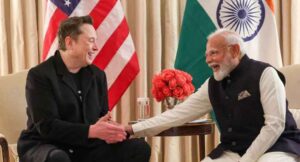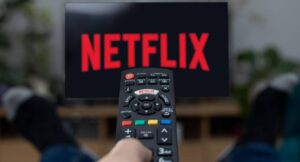Indian IT services firms are moving beyond AI hype to make it a core business strategy. While early initiatives often served as marketing optics, recent commentary reveals a marked shift toward tangible investments in AI talent, domain-specific solutions, and client-focused innovation. Generative AI, conversational AI, and productivity-focused solutions dominate today, especially in BFSI, healthcare, and retail, with agentic AI emerging as the next frontier.
IT services giants like TCS, Infosys, and Wipro also made significant bets on AI in their Q4FY25 commentary, securing multiple deals in the space.
Wipro CEO & MD Srini Pallia during the Q4 Earnings Conference Call, shared the company’s clients responded well to its consulting-led AI-powered industry and cross-industry solutions, reflected in the growth in top accounts and large deal bookings in FY25.
In Q4, the company closed 17 large deals with a total value of $1.8 billion across markets and sectors, and 63 large deals for full FY25 at a value of $5.4 billion and a 17.5% growth YoY.
“We are applying whatever GenAI benefits are relevant to our customers. In many cases, as customer budgets free up, we can use GenAI and get some additional work done for them. That could also offset some revenue drops. We continue to infuse GenAI into managed services, deals, and other opportunities with our existing clients, and leverage it to look at new revenue streams. So it is not just operating or developing better for clients using GenAI but also changing the game for them.”
TCS CEO K Krithivasan also noted during the Q4 Earnings Conference Call that the company’s pipeline of AI, and GenAI engagement is higher than in the last few quarters, with a significant increase in deal wins across AI for IT and business.
There is an increasing demand for GenAI use cases in contracts management, sales campaigns, content creation, customer servicing, and tech support among others. Alongside, the propensity to roll out more GenAI use cases to production is increasing, and the organizational barriers witnessed earlier are diminishing. He also pointed out the maturity in the request for GenAI pilots with a sharper focus on business outcomes rather than mere experimentation.
“The AI push by Indian IT services firms is increasingly becoming a strategic pivot and not just a marketing play. While early efforts may have leaned more on narrative, we now see serious investments in AI talent, domain-focused solutions, and client-centric innovation. The shift is real—but uneven across the industry. The leaders are separating themselves by embedding AI into core service lines, not just front-end showcases,” Dikshant Dave, Co-founder & CEO, of Zigment AI, explained.
While most firms continue relying heavily on third-party platforms or open-source LLMs, proprietary AI platforms are still nascent. However, some green shoots are emerging in sector-specific copilots, internal developer tools, and IP-led automation, all crucial for differentiation going forward.
Global players like Accenture or IBM may have a longer legacy in AI R&D and industry-specific solutions, but Indian companies are catching up fast by leveraging their strong engineering base, cost advantage, and experience in managing scale, observed Jaspreet Bindra, the co-founder of AI&Beyond. This shift is aided by proactive investment in AI platforms, partnerships with hyperscalers, and GenAI integration into service offerings.
“That said, most AI adoption by clients is still happening as part of broader digital transformation mandates rather than standalone AI engagements. Clients often look to Indian firms to modernise their tech stack, improve efficiencies, or build new digital experiences—with AI becoming a powerful enabler in that journey. Key challenges lie in operationalising AI at scale—ensuring model governance, data quality, ethical use, and measurable business outcomes. Indian IT firms must also build deeper domain-specific AI capabilities and IP to stay competitive,” Bindra noted. The Hindu BusinessLine









